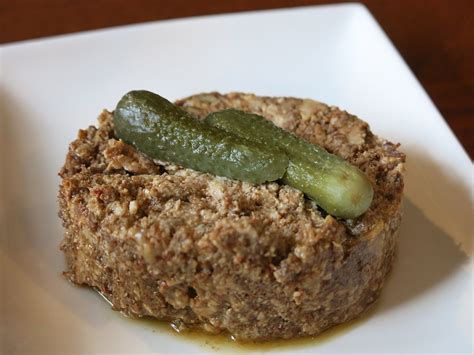Liver Pudding: A Delicious Way to Use Liver
Liver pudding, a savory and surprisingly versatile dish, offers a delicious way to incorporate liver into your diet. While the name might sound unappetizing to some, the reality is far from it. This traditional dish, particularly popular in certain regions, boasts a rich history and unique flavor profile that's worth exploring. This comprehensive guide will delve into the nuances of liver pudding, addressing common questions and highlighting its culinary appeal.
What is Liver Pudding?
Liver pudding, also known as liverwurst in some regions, isn't a pudding in the traditional sense. It's a type of sausage, typically made from pork liver, along with other meats like pork, beef, or veal. These ingredients are finely ground and combined with seasonings, spices, and sometimes fillers like breadcrumbs or barley. The mixture is then cooked, often steamed or baked, resulting in a dense, spreadable sausage. The final product varies significantly based on regional recipes and personal preferences, ranging from coarse and chunky to smooth and pate-like.
What Does Liver Pudding Taste Like?
The taste of liver pudding is unique and often described as savory, slightly gamey, and rich. The liver provides a distinct, slightly metallic flavor, which is balanced by the other meats and seasonings. Common spices include salt, pepper, sage, and thyme, contributing to a complex and satisfying flavor profile. The texture is generally smooth but can range from creamy to slightly coarse, depending on the recipe and preparation method.
Is Liver Pudding Healthy?
Liver is a nutritional powerhouse, being a rich source of Vitamin A, Vitamin B12, iron, and other essential nutrients. However, the health benefits of liver pudding depend heavily on the specific recipe and ingredients used. Some recipes might contain high levels of sodium and fat, depending on the proportion of pork and other added ingredients. Therefore, it's important to consume liver pudding in moderation and opt for recipes that emphasize leaner meats and reduced sodium. Moderation is key to reaping the nutritional benefits of liver without exceeding recommended daily intake levels of saturated fats.
How is Liver Pudding Made?
The process of making liver pudding involves several steps, starting with the preparation of the liver and other meats. The ingredients are finely ground, often multiple times for a smoother texture. Then, seasonings and spices are added, thoroughly mixed into the ground meat. The mixture is then stuffed into casings (natural or synthetic) or baked in a loaf pan. The cooking method varies—some recipes call for steaming, others for baking, which results in variations in texture and flavor. Finally, the cooked liver pudding is often chilled before serving.
What are the Different Types of Liver Pudding?
Liver pudding recipes vary significantly across different cultures and regions. Some versions might include additional ingredients like onions, apples, or even nuts, lending a unique twist to the classic recipe. The texture can vary from smooth and creamy to coarse and chunky, and the seasoning profiles can differ widely, showcasing the versatility of this dish.
Can I Make Liver Pudding at Home?
Absolutely! While making liver pudding from scratch might seem daunting, numerous recipes are readily available online and in cookbooks. With the right ingredients and a bit of patience, you can create a delicious and customized version of this traditional dish. It’s a rewarding culinary experience, allowing you to control the ingredients and create a product that perfectly suits your taste.
Where Can I Buy Liver Pudding?
Liver pudding can be found in various places, depending on your location and the popularity of the dish in your region. Some specialty butcher shops, delicatessens, and international markets carry liver pudding. Additionally, some larger grocery stores might stock it, particularly those with extensive international food sections.
Conclusion
Liver pudding, despite its name, offers a unique and flavorful culinary experience. By understanding its origins, taste profile, nutritional value, and preparation methods, you can appreciate this traditional dish for what it truly is: a delicious and versatile way to incorporate the nutritional benefits of liver into your diet. Remember to always consume in moderation and choose recipes that prioritize leaner meats and reduced sodium for optimal health benefits.

